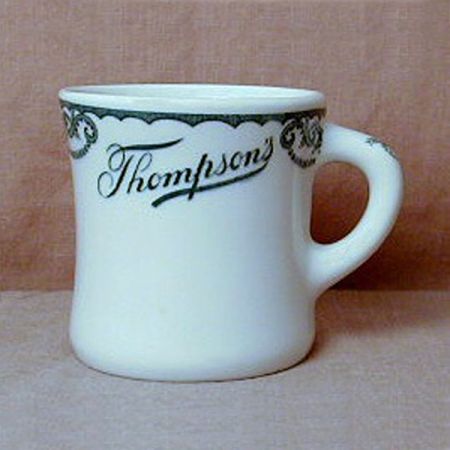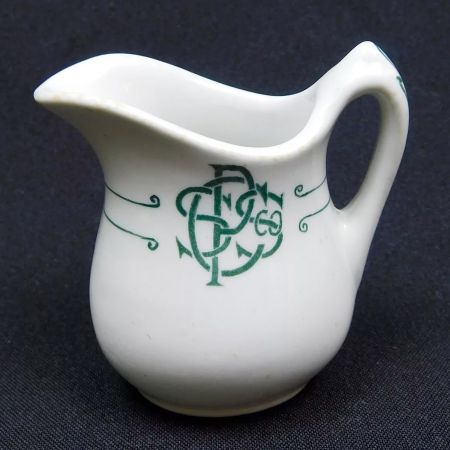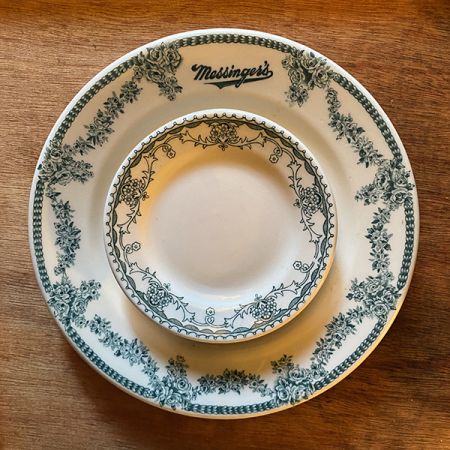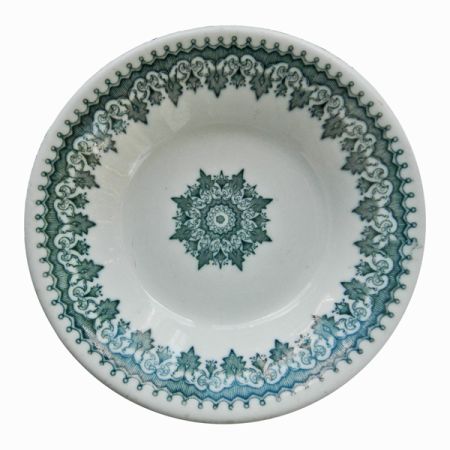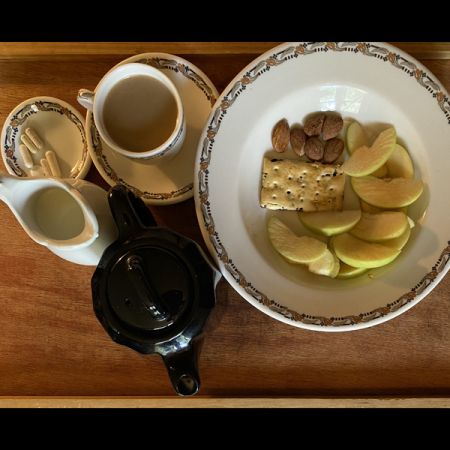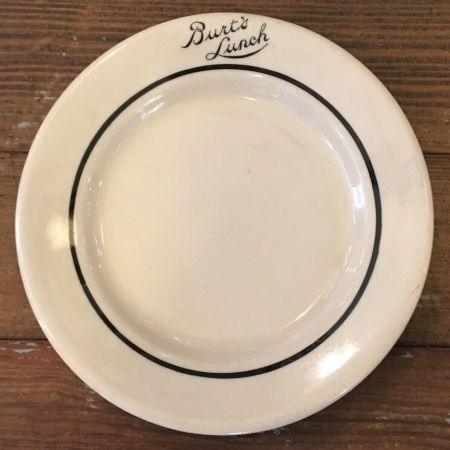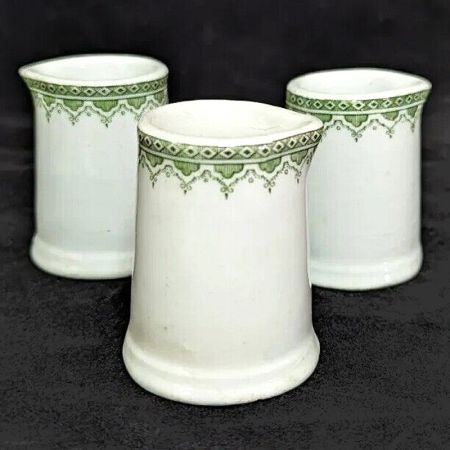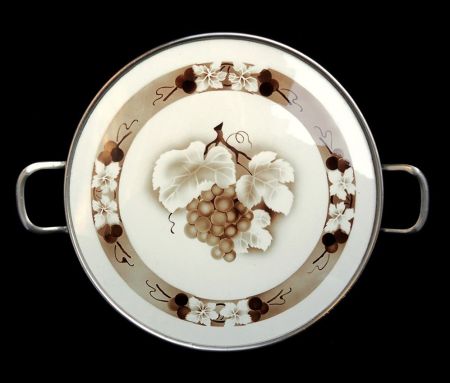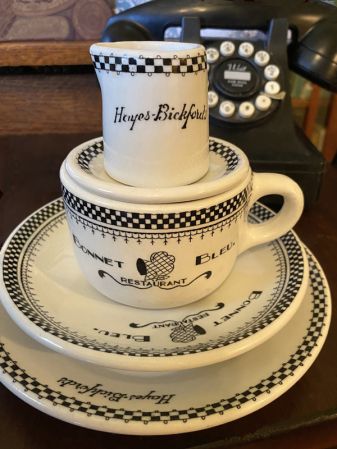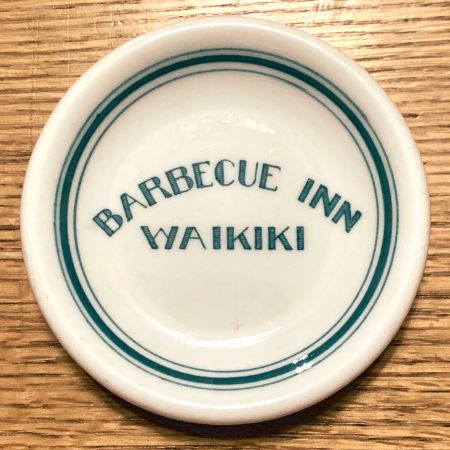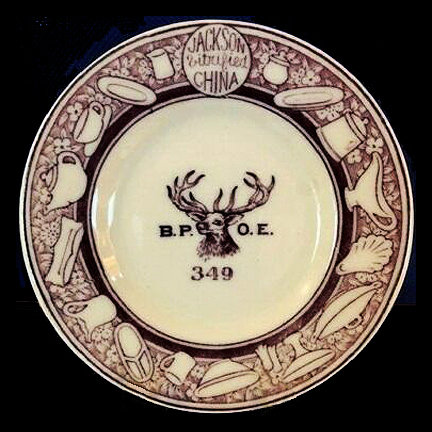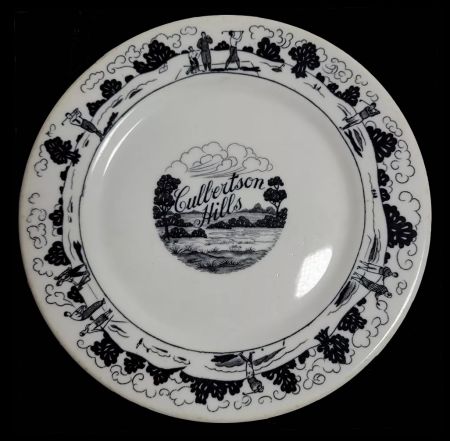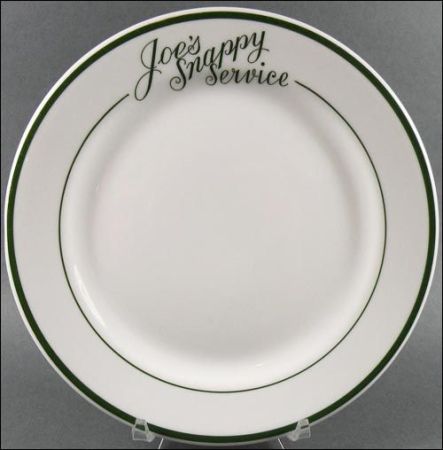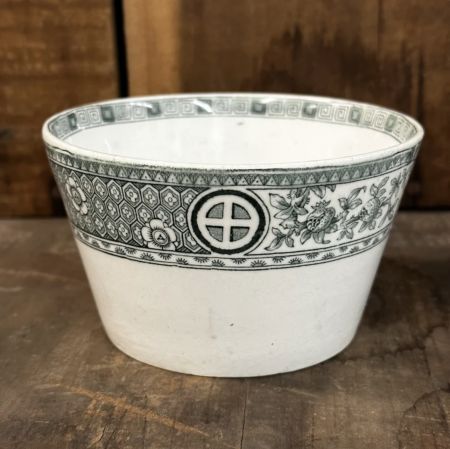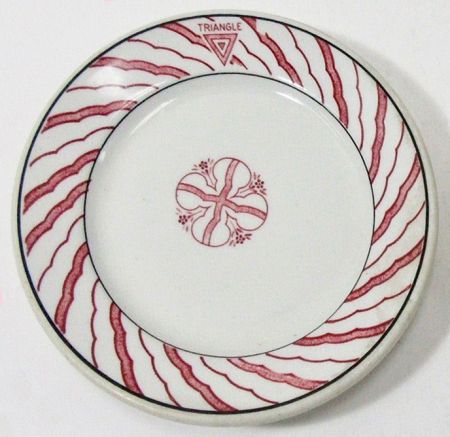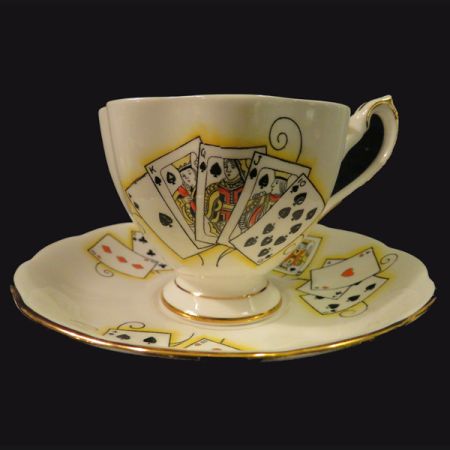Porcelain Madness: Difference between revisions
(img shuffle) |
(typo patrol) |
||
| Line 20: | Line 20: | ||
File:Wood-and-Sons-Acme-Green-and-White-PCSSCo-Creamer.jpg|A green and white stripe 19th century creamer, marked P.C.S.S.Co. for the Pacific Coast Steamship Company, made by Wood and Sons in England in their Acme pattern. The P.C.S.S.Co. line originated in 1867 as Goodall, Nelson, and Perkins, and took on the P.C.S.S.Co. name in 1876. The company was bonded as a common carrier in 1887, running between San Francisco and Port Moody, B.C., with short-run lines south to Santa Barbara. By 1900, offices in Seattle extended operations as far north as Alaska. In 1916 the P.C.S.S.Co. was sold to the Admiral Line, but its ships sailed on with P.C.S.S.Co. markings until ceasing passenger operations in 1936 and freight operations in 1938. | File:Wood-and-Sons-Acme-Green-and-White-PCSSCo-Creamer.jpg|A green and white stripe 19th century creamer, marked P.C.S.S.Co. for the Pacific Coast Steamship Company, made by Wood and Sons in England in their Acme pattern. The P.C.S.S.Co. line originated in 1867 as Goodall, Nelson, and Perkins, and took on the P.C.S.S.Co. name in 1876. The company was bonded as a common carrier in 1887, running between San Francisco and Port Moody, B.C., with short-run lines south to Santa Barbara. By 1900, offices in Seattle extended operations as far north as Alaska. In 1916 the P.C.S.S.Co. was sold to the Admiral Line, but its ships sailed on with P.C.S.S.Co. markings until ceasing passenger operations in 1936 and freight operations in 1938. | ||
File:Messingers-Plate-Stack.jpg|A soup plate with rose swags in green, marked for Messinger's Restaurant in Chicago, Illinois, made by Shenango, circa 1912- | File:Messingers-Plate-Stack.jpg|A soup plate with rose swags in green, marked for Messinger's Restaurant in Chicago, Illinois, made by Shenango, circa 1912-1922. Samuel P. Messinger was the proprietor and sales manager of this small chain of lunch rooms in Chicago and environs. Within it rests a small unmarked bread plate in the Marion pattern made by Mayer China, circa 1912 – 1935. Marion was a generic pattern of swags and swirls, but this plate, like many other Marion pieces, is back-stamped for the Horn & Hardart Automat restaurant chain based in New York City. | ||
File:Warwick-The-Claypool-Indianapolis-BW-Checkerboard-CS.jpg|A cup and saucer made for the Claypool Hotel in Indianapolis, Indiana, by the Warwick China Company in Wheeling, West Virginia. My husband nagasiva and i used to do freelance digital graphics and typesetting for a publishing company called Claypool Comics. When i found this set and an accompanying plate, i was pleased to see that the seller had two of these trios, so i bought both of them and passed the dupe set on to my old colleague Richard Howell, the chief editor, and a writer-artist, at Claypool. | File:Warwick-The-Claypool-Indianapolis-BW-Checkerboard-CS.jpg|A cup and saucer made for the Claypool Hotel in Indianapolis, Indiana, by the Warwick China Company in Wheeling, West Virginia. My husband nagasiva and i used to do freelance digital graphics and typesetting for a publishing company called Claypool Comics. When i found this set and an accompanying plate, i was pleased to see that the seller had two of these trios, so i bought both of them and passed the dupe set on to my old colleague Richard Howell, the chief editor, and a writer-artist, at Claypool. | ||
Revision as of 03:06, 10 April 2025
Welcome to Porcelain Madness, a decorative annex to The Mystic Tea Room, where every piece of chinaware tells a story. This site showcases beautiful top-marked restaurant chinaware from around 1900 through the 1960s. Some of the pieces are displayed as is if an art museum, others form a sequence of cozy photos featuring plated food. As this site grows, it may be split into several galleries. We shall see!
catherine yronwode
curator, historian, and docent
Porcelain Madness
Special thanks to my dear husband and creative partner nagasiva yronwode for illustrations, scans, and clean-ups.
And now, let the madness begin!
The backstamp on this mug reads "Made for Albert Pick & Co. / for J. R. Thompson's / Buffalo China / 1923." Albert Pick and Co. was a large restaurant ware distributor in Chicago, Illinois, which was also the headquarters of the Thompson's restaurant chain. Buffalo China was founded as the Buffalo Pottery in Buffalo, New York, in 1901 by John D. Larkin, head of the Larkin Soap Company to supply premiums for mail-order catalogue customers, but it grew into one of the largest manufacturers of vitrified and custom imprinted institutional, restaurant, railroad, steamship, and hotel ware in America.
A green and white stripe 19th century creamer, marked P.C.S.S.Co. for the Pacific Coast Steamship Company, made by Wood and Sons in England in their Acme pattern. The P.C.S.S.Co. line originated in 1867 as Goodall, Nelson, and Perkins, and took on the P.C.S.S.Co. name in 1876. The company was bonded as a common carrier in 1887, running between San Francisco and Port Moody, B.C., with short-run lines south to Santa Barbara. By 1900, offices in Seattle extended operations as far north as Alaska. In 1916 the P.C.S.S.Co. was sold to the Admiral Line, but its ships sailed on with P.C.S.S.Co. markings until ceasing passenger operations in 1936 and freight operations in 1938.
A soup plate with rose swags in green, marked for Messinger's Restaurant in Chicago, Illinois, made by Shenango, circa 1912-1922. Samuel P. Messinger was the proprietor and sales manager of this small chain of lunch rooms in Chicago and environs. Within it rests a small unmarked bread plate in the Marion pattern made by Mayer China, circa 1912 – 1935. Marion was a generic pattern of swags and swirls, but this plate, like many other Marion pieces, is back-stamped for the Horn & Hardart Automat restaurant chain based in New York City.
A cup and saucer made for the Claypool Hotel in Indianapolis, Indiana, by the Warwick China Company in Wheeling, West Virginia. My husband nagasiva and i used to do freelance digital graphics and typesetting for a publishing company called Claypool Comics. When i found this set and an accompanying plate, i was pleased to see that the seller had two of these trios, so i bought both of them and passed the dupe set on to my old colleague Richard Howell, the chief editor, and a writer-artist, at Claypool.
A butterpat in the Aristocrat design of panels and flower baskets, executed in a distinctive orange colour by Sterling China of Wellsville, Ohio, for the Goldblatt's department store chain headquartered in Chicago, Illinois. Sterling China was founded in 1917 and closed in 2003. Goldblatt's was founded in 1914, and in 1919 it moved to a 10-story building on State Street which included a restaurant. By the 1970s the chain included 47 stores throughout the Midwest, most or all of which had in-house restaurants. Alas, like many other department store, Goldblatt's failed to adapt to online shopping, and thus it was liquidated in 2003. The exact manufacturing date of this particular butterpat is not indicated by a backstamp, but my guess is that it was made in the 1930s.
Breakfast in bed served on antique restaurant ware -- "Glendale" by O.P.Co. Syracuse. This morning's Glendale Special features Coffee with Milk, Apples from our Forestville orchard that were gathered by my loving husband nagasiva yronwode, a half a dozen California Almonds, an assortment of vitamins, and a Zante Currant filled Crawford's Garibaldi Biscuit that came all the way from England!
A bread plate from Burt's Lunch, made by Iroquois in their Iro-Tan cream colour, with a single black striping and black lettering. This name of the restaurant could hardly be said to be in a font or to be a sample of sho-card lettering -- but it is nonetheless charming in its amateurish oddity. I am not sure where this was located, but i do have a photo of a Burt's Dine and Dance Lunch on State Street in Newcomerstown, Ohio, with signage that indicated they also sold beer.
Three individual green-and-white creamers made by Grindley Hotel Ware in the Pomeroy pattern. Grindley's green glaze is a lighter and yellower shade than the standard forest green so well known through green-stripe ware. These creamers are not back-stamped, but they accompany a plate backstamped as Grindley Hotel Ware / Made in England / "Pomeroy" / Huntington Paper & China Co. / Huntington, West VA." The American importation of English semi-vitreous chinaware for both domestic and restaurant use was common at one time, but importing it to West Virginia does seem like carrying coals to Newcastle, given the number of potteries in Appalachia at the time.
A mystery cup and saucer from the early 20th century. It was made by the Mayer China company and dates to the era of hand-striping, probably around the 1910s to 1920s, but the "G & L" logo turns up no restaurants, tea rooms, academic institutions, churches, fraternal organizations, factories, fire departments, or other of the "usual suspects" who customarily had their own sets of restaurantware.
"Spritzdekor" is German for "airbrushed decorations" -- and this is a German porcelain spritzdekor cake plate fitted into a nickel-plated holder with handles. The image, airbrushed in shades of indigo blue, depicts two leafy branches of Damson Plums ("Kriechen-Pflaume") in full fruit. I bought this cake plate on eBay years ago, and it came all the way from Germany. It is very nearly identical to a cake plate that my German-Jewish grandmother Ida had in her home. She called it a tortenplatte -- a plate for tortes.
Here we have a German porcelain spritzdekor cake plate or tortenplatte fitted into a nickel-plated holder with handles. The image, airbrushed in shades of brown, depicts a leafy branch of Grapes. "Spritzdekor" is German for "airbrushed decorations." Comparing this one to the tortenplatte decorated with airbrushed Damson Plums ("Kriechen-Pflaume") in shades of blue indicates that they came from the same part of the world. They both date back to the 1920s and, truth to tell, i am more than a little obsessed with them.
The stack of vintage black-and-white restaurant ware on which i ate my breakfast on January 13th, 2021. These pieces all feature checkerboard bands with picoté edging. The creamer, butterpat, and small plate were made for the Hayes-Bickford cafeteria chain and the cup and saucer were once property of the Bonnet Bleu restaurant.
A small but mighty piece of restaurant ware from my collection. It is a butterpat from the Barbecue Inn in Waikiki, Hawaii Territory, made in the mid-1930s. The lettering is just amateurish enough to make me cringe, but the intention to hit the ultra-moderne-deco mark is so sincere that i am charmed. The Barbecue Inn was founded sometime after 1900 by Seihichi Shikata (1884-1931), born in Yokohama, Japan, and his wife Tsune Shikata (- 1932), born in Yamaguchi, Japan. When they died, the restaurant was carried on by their son Joseph Kiyoshi "Joe" Shikata (1906-1992), born in Waipahu, Hawaii. I think this butterpat dates from the era of the early proprietorship of Joe Shikata, circa 1932 - 1939. A 1933 advertisement lists the "Barbecue Inn at 2015 Kalakaua Ave., K. [Kiyoshi] Shikata, Mgr., Phone 91981."
A Jackson Vitrified China butterpat made for the Benevolent and Protective Order of Elks, Lodge #349, Pride of Delaware, in Newark, Delaware. The Elks are a fraternal membership group that offers community building and charitable services. Elks greet one another with a cheerful, "Hello, Bill!" Their colour is purple and to them the 11th hour is the golden hour of recollection, the homecoming of those who wander, the mystic roll call of those who will come no more because, living or dead, an Elk is never forgotten, never forsaken.
Preparing for breakfast with a vintage creamer and 6" plate. Eggs over easy and an English muffin are on the menu and will be complemented by this yellow and white service. The creamer was manufactured by Medalta Potteries of Medicine Hat, Alberta, Canada, and is back-stamped with the date-code 52, for 1952. It advertises the Nanking Tavern, a beloved Chinese restaurant which was located at the corner of Elizabeth and Hager streets in Toronto, Ontario, Canada. The plate is a mystery; it bears a conventional logo crest with a full-rigged sailing ship and the letters H MP H. The MP probably stands for a Scottish name, such as MacPherson or McPeak and the final H may possibly signify "Hotel" -- but precise identification has so far eluded me. In any case, the organization that used this crest was somewhere in the United States because the plate was made to order by Sterling China of East Liverpool, Ohio. The narrow rim and yellow / grey colourway give it a mid-century modern look and indeed its back-stamp date-code of A3 indicates that it was made in the year 1953.
Here's a beautiful 6-inch black-and-white desert plate made by Warwick for the Culbertson Hills Golf Course in Edinboro, Pennsylvania in 1930, the year it opened. The artwork and lettering are superb -- and the same uncredited artist also produced a gorgeous matching brochure for the country club. I love lettering, i love art deco line art, i love cumulus clouds in art (and these are amazing clouds!) ... but i don't love the Culbertson Hills Golf Course, which advertised that it was "open to the pubic under restrictions which the company imposes, of course" -- specifically, that membership was offered "only to Gentile people." In other words, no Jews were allowed -- and neither were African Americans. I have no idea if or when Culbertson Hills changed its racial and religious exclusion policies, but this beautiful plate remains a symbol of the finest commercial art of its time, in the service of the ugliest discrimination of its time.
Green Circle-in-Cross Transferware Bowl, made in England, 19th century. I bought this piece of low-fire earthenware (not my usual semi-vitreous ware) because i am a fan of green-and-white ware (who isn't?) and the circle-in-cross is part of my own signature. Also, it is in the Aesthetic genre, which i love. I suppose it to be late 19th century.
Carr Vitrified China advertising butterpat, made in Grafton, West Virginia. Sample butterpats were given away at trade shows by restaurantware manufacturers during the inter-war period. This one is just a bit oversized for the usual butterpat, but it is certainly too small to qualify as a plate. It probably dates to the late 1930s.
Sometimes the decoration of a retaurant plate is so amateurish or abnormal that it makes me wonder what the pottery company's distributor or rep thought of it. But, as they say, "The customer is always right," so here we have one of many bizarre examples of how the Toffenetti / Triangle restaurant chain in Chicago liked their plates to look in the early 1930s. The pottery company is Sterling, and i'll bet that some of the factory's decorators went home to migraine-inducing nightmares after 8 hours of looking at this pattern!
A fine bone china tea cup and saucer set made by Shore & Coggins in the Lady Luck pattern at the Queen Anne Pottery in Staffordshire, England. The maker's mark dates it to between 1959 and 1966. The decoration is of playing cards, the front showing a royal flush, while on the back is a picture of the joker; there is also a joker on the inside of the cup. A small sandwich plate came with each set and the sets were made in four colourways: blue (hearts), green (diamonds), pink (clubs), and yellow (spades). I love this tea set for reading tea leaves, especially if the sitter has a question about luck! For hundreds of images of tea leaf reading sets, and instructions in tasseomancy, see our sister-site, The Mystic Tea Room.
